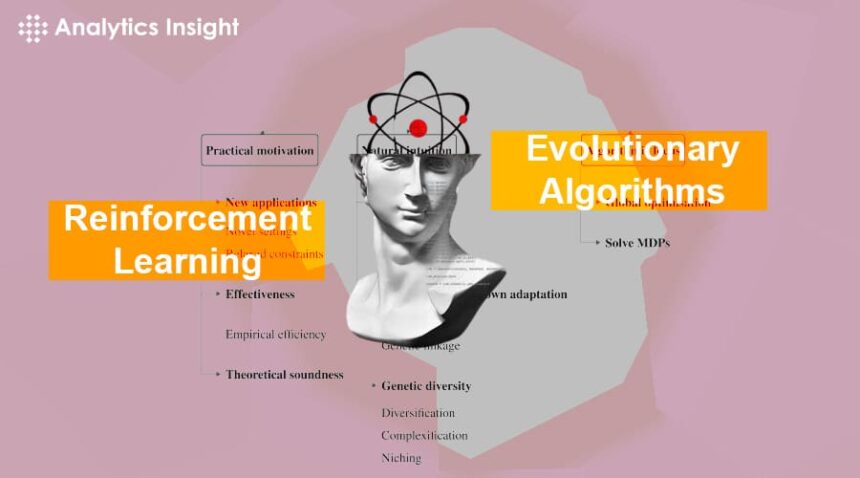Comparing reinforcement learning and evolutionary algorithms in AI model training
Reinforcement learning and evolutionary algorithms represent two distinct approaches to training AI models, each with its strengths and applications.
In reinforcement learning (RL), an agent obtains decision-making skills by interacting with its surroundings in order to accomplish a task. It involves the agent taking actions in an environment and receiving feedback in the form of rewards or penalties based on the outcome of those actions. Over time, the agent learns to optimize its decision-making process to maximize rewards and achieve its objectives. RL has been effectively used in a number of fields, including as autonomous driving, gaming, and robotics.
Evolutionary algorithms (EAs), on the other hand, are optimization techniques inspired by the process of natural selection. These algorithms work by simulating the process of evolution, where potential solutions to a problem (represented as individuals or candidate solutions) undergo selection, reproduction, and mutation to generate new candidate solutions iteratively. EAs are particularly well-suited for solving optimization problems with complex and non-linear search spaces, where traditional optimization methods may struggle.
When it comes to training AI models, both RL and EAs offer unique advantages and are suitable for different scenarios. RL is particularly effective in scenarios where the environment is dynamic and uncertain, and the optimal solution is not known in advance. For example, RL has been successfully used to train agents to play video games, where the agent must learn to navigate complex and changing environments to achieve high scores.
On the other hand, EAs excel in optimization problems where the search space is vast, and the objective function is complex and multimodal. For instance, EAs have been employed in tasks such as feature selection, neural network architecture optimization, and hyperparameter tuning, where finding the optimal configuration is challenging due to the high dimensionality of the search space.
In practice, the choice between RL and EAs depends on various factors such as the nature of the problem, the available resources, and the desired performance metrics. In some cases, a combination of both approaches, known as neuroevolution, can be used to leverage the strengths of both RL and EAs. Neuroevolution involves evolving neural network architectures and parameters using evolutionary algorithms while training them using reinforcement learning techniques.
Conclusion:
Overall, both reinforcement learning and evolutionary algorithms are powerful tools for training AI models and have contributed to significant advancements in the field of artificial intelligence. Understanding the strengths and limitations of each approach is crucial for selecting the most appropriate technique for a given problem and maximizing the effectiveness of AI model training efforts.
Source: www.analyticsinsight.net


